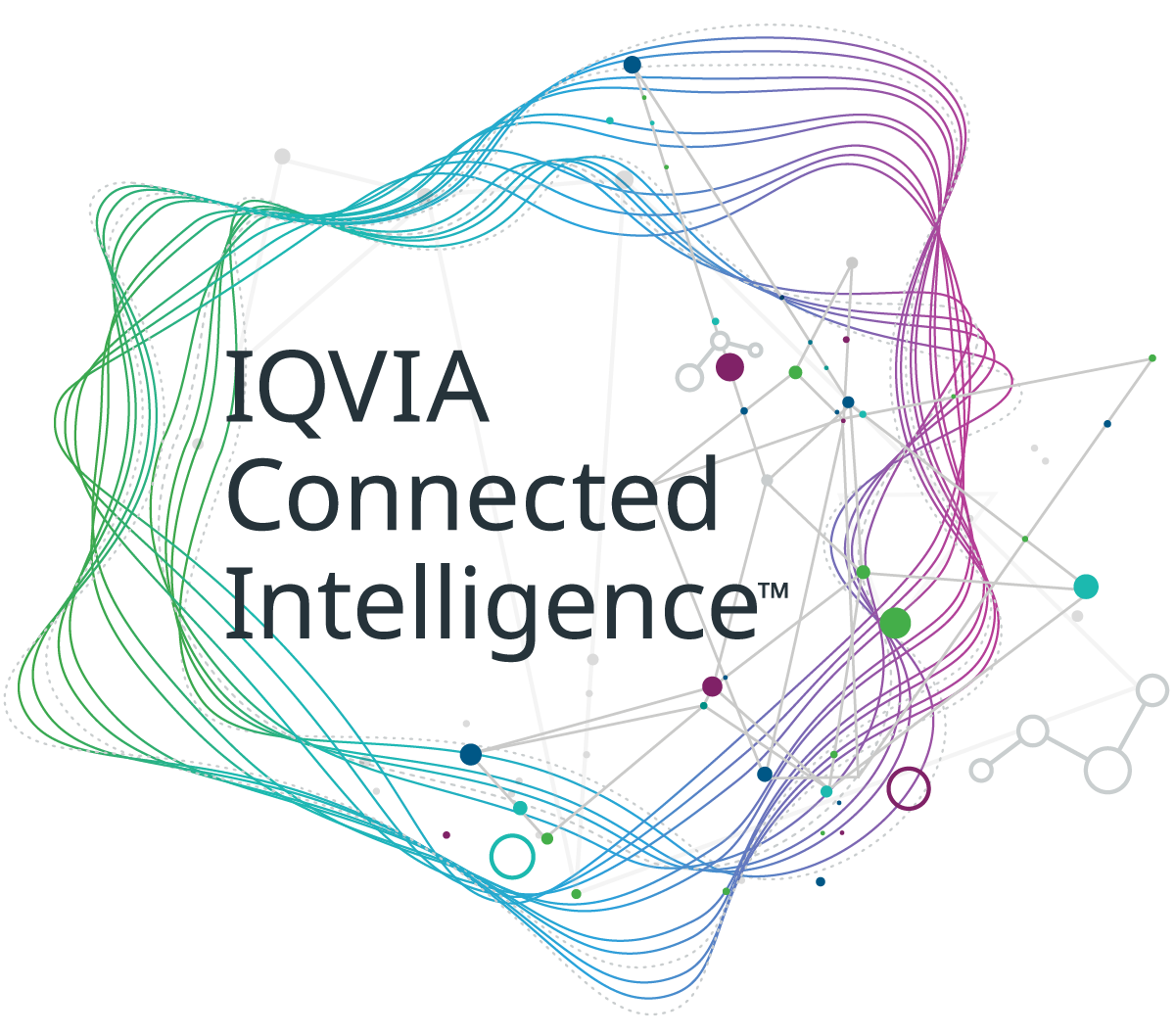IQVIA is using vast quantities of data in powerful new ways. See how we can help you tap into information from past trials, patient reported outcomes and other sources to accelerate your research.
As the volume of health-related data continues to grow at a compound annual rate of 36%, the challenge lies in finding ways to effectively collect and analyze this data. As a further challenge, data is often siloed by country, language, region, hospital, and even department, making it difficult to access and utilize.
To maximize the potential of RWD, state-of-the-art tools are needed to unlock the full potential of RWD for insights and evidence generation in the healthcare industry.
IQVIA’s latest Real World Data guide features in-depth information on navigating the complex healthcare ecosystem. In the guide, you'll delve into the challenges of working with RWD, including issues related to the FAIR principles of data management discussed below.
But that's just the beginning. In this informative RWD guide you’ll also discover the many uses of RWD, including details on the journey of transformation into Real World Evidence (RWE).
Real-world data needs to be cleaned, curated, harmonized, and de-identified before it can potentially become evidence. The initial intent behind patient data collection is not for analytics, but rather for administrative purposes or patient health records, requiring the need for processing to support improvement of healthcare management and systems. Once transformed, real-world data can then be analyzed using diverse approaches, from descriptive statistical models to complex AI algorithms.
The heterogeneity of real-world data sources, entered in various formats and with differing access requirements, presents challenges in transforming RWD into real-world evidence. The FAIR Data Principles (Findable, Accessible, Interoperable, and Reusable) offer a framework for sharing data in a way that enables maximum use and reuse.
Addressing the FAIR principles is crucial for unlocking the full potential of RWD. However, operational, and functional challenges must also be addressed, such as finding and accessing fit-for-purpose data assets.
Different types of real-world data (RWD) are relevant for answering different research questions, with different strengths and limitations. Many types of patient databases are available, including longitudinal prescriptions (LRx), electronic medical records (EMR), claims, hospital patient encounters, registries, cross-sectional data, and genomics data.
Longitudinal prescriptions are useful for capturing all dispensations in retail pharmacies as well as prescriptions delivered out of hospitals but may not cover relevant specialties and may have limited linkage possibilities. LRx data is useful for brand performance, market dynamics, and analysis of patient pathways, treatment patterns, concomitant drug use, compliance, and persistence.
In contrast, electronic medical records (EMRs) cover all settings of care but have no clinical information directly accessible. Hospital patient encounters are limited to hospital care and have limited intra-hospital coverage. In terms of application, anonymized patient records are ideal for pharmaco-epidemiology, PASS/DUS studies, PV, HEOR, compliance and persistence, pharmaceutical guidelines, drug usage, and more.
The strengths and limitations of each data type should be taken into account when selecting data assets for research purposes.
Data landscaping can help determine which data sources are most likely to be of high value to you. Cataloguing and evaluating data sources is a resource-intensive process that involves shortlisting, capturing metadata, prioritizing data sources, and performing quantitative evaluations.
The process follows a funnel/filter approach to select the most appropriate source(s) and inform the design of research studies. Describing and evaluating data sources comprehensively requires cooperation and engagement from data source owners or custodians.
IQVIA has undertaken the major step of developing a comprehensive Health Data Catalog (IHDC) to enable quick and easy identification of the most appropriate data sources for answering specific research questions. IHDC includes features for data usage projection, granularity, appropriate use by therapeutic area and audience, data quality, governance processes and guidance, legal and regulatory requirements, data enhancement capabilities, dataset characteristics, and content description.
Depending on the research questions of interest, IQVIA experts can advise on the best approach and datasets to consider, as well as conduct research on behalf of clients using blended research teams or facilitate data access for research where permissions allow.
Overall, the development of metadata catalogs like IQVIA Health Data Catalog is crucial for selecting the most appropriate data sources to generate valuable evidence and support healthcare product development.
Accessing data once it is found to be fit-for-purpose is the next challenge. Data access can be direct, indirect, or federated, with use restrictions that may apply.
Direct access allows clients to access data either at a transactional level or query level, while indirect or project-per-project access involves client interactive analytics via software hosted by IQVIA.
The current market trend is for data providers to be less willing to share their data due to privacy concerns. As a result, data access is increasingly being done using a federated model, which allows for analysis to be performed on datasets wherever they are located, even behind firewalls, via remote access.
Once identified and accessed, Real World Data offers a range of possible uses for healthcare stakeholders throughout the drug development lifecycle.
After real-world data is curated, harmonized, and made analytically-ready, it can be leveraged. This includes planning for real-world evidence strategy, adopting appropriate clinical trial designs and comparators, and performing thorough post-marketing evaluations.
Pharma companies and regulatory bodies are investing in building internal knowledge and adopting RWE-based strategies to support effective and safe product launches, new development needs, and drug use assessment in real-world settings. This RWD guide showcases examples of how RWE is leveraged throughout the product lifecycle, from preclinical to post-approval uses for RWD.
For clinical trial optimization, RWD can help identify the best sites and patients, support protocol design, and optimize country allocation. In epidemiology assessment, RWD can be used to monitor pathology evolution, understand the natural history of disease, and identify unmet needs.
For drug safety and risk management, RWD can be leveraged for signal detection and assessment, safety surveillance, and risk assessment.
In HEOR/market access, RWD can demonstrate the value of medicine through evidence-based health economic evaluation and real-world outcomes.
Finally, in commercial analytics, RWD can help diagnose, plan, forecast, and track brand performance.
While regulatory bodies still need to adapt their processes to encompass RWD-generated insights, the healthcare industry is increasingly recognizing the value of RWD for supporting product development and lifecycle strategy.
Real World Data represents a significant investment to become analytically-ready and potentially generate insights, making it crucial to leverage as much as possible throughout the drug development lifecycle.
Overall, RWD offers a powerful tool for generating valuable evidence and supporting healthcare product development and lifecycle strategy. The use of different types of patient databases and the right access model can help healthcare stakeholders unlock the full potential of RWD and drive innovation in the healthcare industry.
New sources of real-world data, innovative access and governance models, and advanced analytical tools are leading to the emergence of novel platforms and research project designs.
This RWD eBook explores examples of these new approaches include expanding and leveraging data networks, multi-country studies, enriching data through review of medical records and patient-reported outcomes, and using AI and machine learning to navigate the healthcare ecosystem.
Combining primary and secondary data and applying AI solutions across the product life cycle and beyond can bring improved precision, speed, and scale to various healthcare functions.
Whether you're interested in multi-country studies, enriched studies, or cutting-edge applications of artificial intelligence and machine learning, this guide to RWD has something for you.
So why wait? Download your copy today and start unlocking the full potential of Real-World Data.
Have questions or want to speak to an expert? Fill out the contact form below and a team member will get back to you.

Have a question? Want a demo?
We'd love to show you how RWD can help you generate meaningful real world evidence.
Just send us a message and we'll connect you to a dedicated expert who you give you a demonstration, customized to your goals and needs.
You may also be interested in
Meet Your New RWD Resource Guide
The RWD landscape is constantly expanding – and so is our content hub – with infographics, client case studies, and demos showing how to rapidly gain rich insights with RWD.
Unlock the Keys to Effective Real World Data Usage
Real World Data (RWD), patient data that originates from real world settings delivers powerful insights to healthcare stakeholders
How Real World Data is Transformed – and Transforming Healthcare
Access to Real World Data (RWD) significantly expands the potential to generate meaningful real world evidence – when the right steps are taken
Clalit Health Services - Israel
A strategic partnership with Israel's largest HMO provides access to unique data assets ideal for both RWD studies and clinical trials.
Related solutions
Richer real world data insights can drive smarter decisions.

























